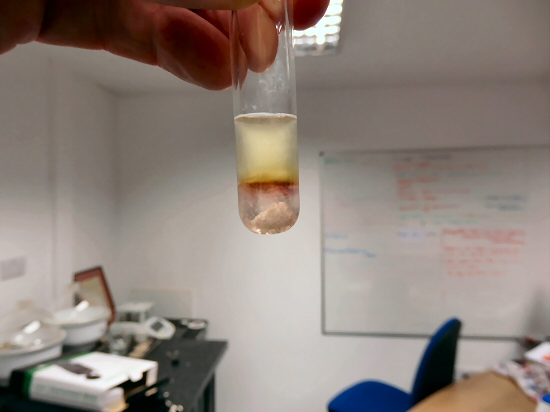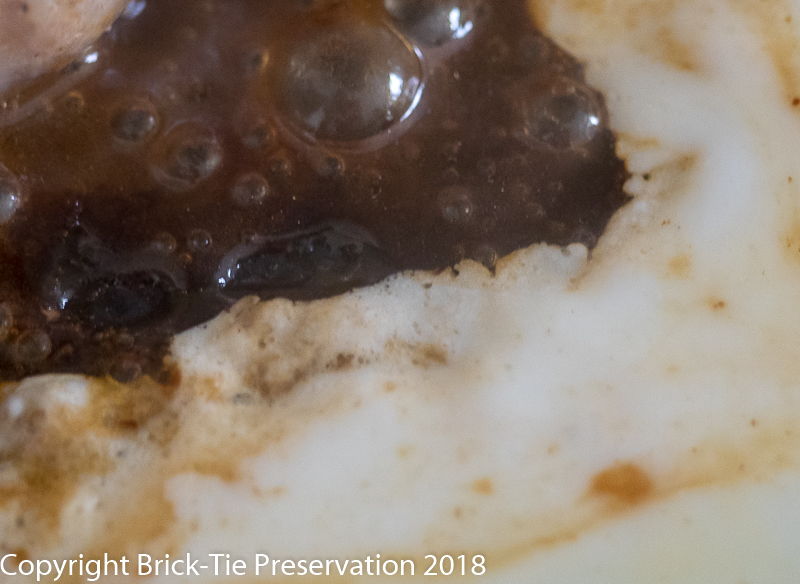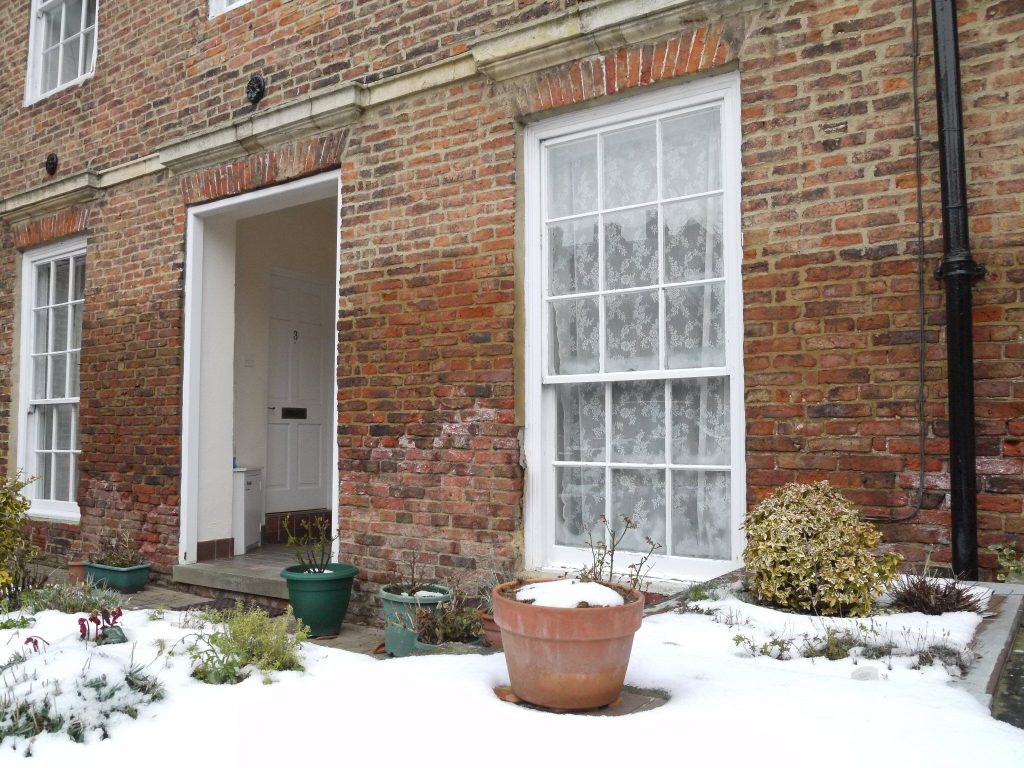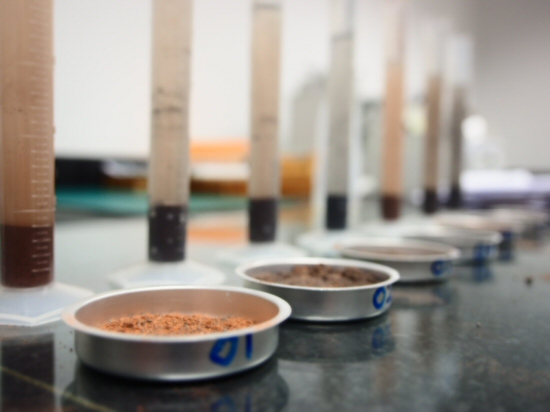Viscous fingering and its misinterpretation
Introduction.
Chemical DPC’s have been used and misused for decades. There are very many reasons for this. However, now it’s come to building professionals raising the question; do chemical DPC’s work and is there such a thing as rising damp? This post doesn’t answer these questions; to ask them reveals a level of ignorance that I won’t pander to. However, this post addresses the real issue of how recent austerity, combined with years of complacency, has allows a situation to arise where really clever people start acting like panicking schoolchildren and all faint together. Read on and I will explain the underlying flaws in the current rush to abandon DPC work and why viscous fingering is taking center stage (even though it doesn’t matter)
Rising damp is a myth – rising damp is as rare as rocking horse sh*t – Rising damp is incredibly rare – Rising damp just doesn’t happen – Chemical DPC’s are a waste of time due to viscous fingering
Five daft statements by four Chartered Surveyors and an Architect; what’s going on?
The reality of rising damp has been documented for very many decades, with British standards institute, Building Research Establishment, university studies and many more validating not only the science of it but the accepted methods of resolving the problem. So why would building professionals make such statements? Is it because they have evidence to back this stuff up? Is it just opinion or, cynical efforts to gain notoriety (and therefore in this internet dominated world – valuable influence and money).
Who knows, you’d have to ask them in private. I doubt that the explanations would be backed up by any meaningful facts. The last ‘damp’ report I read from one of these chaps was 20 pages long and most of it was a self-aggrandising CV, followed by statements and solutions which didn’t logically follow the flawed findings made in the report – and this guy is a chartered surveyor, scientist and engineer! So again I ask; what’s going on?
Bear with me and I’ll tell you the truth (oops, I sound like that self-aggrandising consultant now… )
Some navel gazing is required to get an idea of why this has happened:
For decades damp has been dominated by the view that if the base of a wall is damp the answer is to inject chemicals into it and render it with rock hard sand/cement. This is daft of course; it can have its merits but there are some serious problems:
- The base of a wall can be damp for many reasons other than rising damp
- Not all walls are suitable for a chemical DPC’s or for that matter hard sand cement render
- Diagnosis is often left to installers who may be commercially inclined to specify DPC work rather than diagnose related problems
- Inappropriate DPC work allows latent problems to go untreated so clearly the DPC appears not to have worked.
- Those installing DPC systems (including the plastering) have wildly varying skill levels and diligence
So there are very many homes with DPC systems in, which are inexplicably still damp (and many that are dry but these are apparently invisible). The result of all this is a natural and building cynicism about rising damp and its treatment. Let’s face it, if treated walls are still damp then chemical DPC’s are a waste of time aren’t they? Well from the above list we can see how this view could take hold in a layperson or consumer. But what about a professional surveyor’s or engineer’s view being so clouded? They are graduate professionals who should take a detailed and holistic view.

There’s some microscopic viscous fingering going on here – hence the brown ring (concentrate sulphuric acid on to dilute acid mixing with differing viscosity. Brown ring test
It’s clear that many so called failures related to DPC work are due either miss-diagnosis (whether intended or not), or defective workmanship. What about viscous fingering?
Viscous fingering.
This is really a term first coined (in our industry anyway) back in the 1970’s as the DPC industry began to realise that high pressure injection of chemical DPC’s worked better in some walls than others. Research found that as the fluid was pushed through the masonry (often at 150psi or higher), the fluid would find the easiest route. Fluid following behind the initial front would merely follow the preceding chemical, in effect leaving areas free of treatment. The problem was considered serious back then because solvent based chemicals were the most common type used in chemical DPC’s. Clearly the wetter the wall, the more resistant to solvent it is. Differing viscosity also influences how fluids mix. Thus the pressurised solvent could spread quickly into the ‘dryer’ sections. The route was established so lots more fluid was deposited in the least ‘needy’ sections. It was thought that the effectiveness of chemical DPC’s back then was variable, partially due to this (as you’ll read later – it’s red herring, there are other huge negative influences on DPC’s working as intended). It also begs the question; if there are areas which are dry and others wet – why would the dry areas matter, as they are clearly not ‘wicking’ water from the ground anyway? – it’s the damp areas we want to treat)
Viscous fingering is massively influenced by moisture content; pore size in the substrate and especially by the viscosity of the injected material (to get scientific look here https://web.njit.edu/~kondic/capstone/2015/homsy_annual_review_87.pdf ). The subject is huge and still poorly understood.
Experienced contractors would often say that “Some walls just don’t respond well to injection” and those of us old enough to remember those times can relate to that statement.
Beginning to resolve viscous fingering
The initial solution was to reduce pressure and switch to water based DPC systems. In the late eighties and by the nineties Low pressure siliconate became the norm. This was accompanied by a switch to injection into the bed-joint, rather than the masonry units. Bed-joints offer a more consistent capillary pathway than independent masonry units. The combined effects of reducing solvents and drilling bed-joints had a positive effect. There appeared to be a small increase in performance after these changes. Water is not initially repelled by damp in a wall so less pressure is needed. In addition, sections of wall which for whatever reason have ‘wicked-up’ ground water, are more inclined to accept water in the first place. This applies even if that water contains siliconate. Less viscous fingering was the result. Lots had been learned from so called ‘transfusion’ system such as that employed by Peter Cox for years. These were gravity fed systems which used water based formulation and no pressure, other than a little gravity (gravity being free and always available).
Viscous fingering tackled at last
In the nineties Safeguard Europe brought DryZone DPC cream to the market. Here was a system which required no pressure and the wall in effect ‘wicked’ the material into the bed joints. Other formulators followed and the injection cream method was very quickly established. However, Viscous fingering is back in fashion – a term now banded about as the new mantra. I was sat chatting to some of Yorkshire’s local authority housing officers the other day. As talk turned to chemical DPC installation one spoke up “But do they work Bryan?” he said. I replied “Only if the wall is suitable, has rising damp and if the system’s installed properly”. He smiled at me and, with a bit of a triumphant flourish said “What about viscous fingering, eh?”.
All of his colleagues fell silent and turned to hear my answer. I laughed and explained how that was old hat. They were surprised that I even knew what the term meant. Why?
It happens that one of the five professionals I mentioned had visited this authority earlier in the year. His ‘lessons’ included the gem that “Chemical DPC’s don’t work due to viscous fingering”. He was paid a lot of money to teach this flawed view. Apparently most of the talk he gave was about him, rather than rising damp. However, it still left the officers I spoke to confused and ill-informed about where chemical DPC’s fit into building pathology and home maintenance.
I say flawed view for a very important reason; I like keeping things simple. In surveying things are usually simple. A broken gutter leaks and causes damp – a broken extract fan in a bathroom causes mould – a bridged damp course causes rising damp.

The viscous egg white and less viscous rapeseed oil interact in the pan. Note the edge of the egg where it was fingering into the oil before heat hardened the egg and stopped the fun. Of course, by the logic of some surveyors this now means that frying eggs is unreliable (the egg was delicious though)
But something must be wrong if there are so many homes with chemical DPOC’s installed again and again?
This is the Elephant in the room; the reason many DPC’s haven’t worked is obvious and nothing whatever to do with scientific bamboozle-speak. It’s human behavior every time. Either the DPC wasn’t necessary in the first place (surveyor and officer fault) or, it wasn’t installed correctly (the technician and employer’s fault), or ALL of these things. These are the most common causes of continuing damp – it’s so obvious that only a very highly qualified specialist pathology scientist can’t see it. Playing around the edges with claptrap about viscous fingering, whilst misusing speedy moisture meters will not improve the situation. A common sense approach would be to concentrate on the reasons I have given for these failures. better training, supervision and accountability are what are needed.

Rising damp in winter reveals the effects of hygroscopic salts above the visible efflorescent salt band
It’s not all about technicalities – it’s about money
This post cannot cover this entire subject; it’s multi-faceted and complex. There are technical issues and strong financial and social issues driving this change. Local authorities have been poorly served by their own officers, consultants and damp proofing specialists for years. Now, with decreased funds and rising tenant demands they have to save money. This is the one thing driving them to eagerly take on flawed advice from these guys. They must bring the cost of damp related issues down quickly – I understand and respect that.
Have social housing providers really been ripped off by damp specialists and their own approved contractors?
Well, as a damp specialist I don’t carry out much work for many of the local authorities in the Yorkshire area (one or two maybe). The reason is that almost all of the work is done via complex frameworks with big builder/facilities firms or national damp proofing specialists – everyone knows them. These chaps send out tender documents full of questions like; how much per linier meter of DPC injection? – How much for plaster per square meter? How much for skirting boards? How much for a thirty year guarantee?
As a specialist I have never bothered replying to these. They ask the wrong questions. It follows that all the authority and the facilities provider want is a price for a job. The fact that each house must be treated on its own merits is never in there. No questions about how a damp survey is carried out, what equipment is used or, how qualified the surveyor is or anything else like that.
It’s absolutely no surprise that as time passed councils have spent more and more installing DPC’s that were not needed. There was never any incentive for the specialist to do anything but be cheap. And of course, because the rates are low, volume must be driven up. The main contractors are incentivised to make money not save it. The council officers are not incentivised; they are not trained correctly so they rubber stamp the damp specialist’s report. The tender system was never fit for purpose.
The end result is that the local authorities promoted and helped establish this broken system. Their reaction now is to replace the system without consultation or any meaningful outreach to try to fix it. Thus they are willing participants in outsourcing to another system. A system based mainly on flawed technical knowledge and a similar financial model, which is the inverse of the one they had before. The juxtaposition is that where DPC’s were always the solution before (wrongly), now DPC’s are never the solution (wrongly).
This is what happens when anecdotal evidence supports consumers underlying financial needs. It’s like the vendor of a house when it’s surveyed for a buyer and found defective. Vendors always believe the guy who tells them there is nothing wrong; telling the client what he wants to hear is the first staple of all good salesmen and of no interest to a professional. Has there been ‘ripping off’? Oh yes – it was built-in and inevitable from the start.
How to fix the situation
Proactive specialists and social housing providers are getting very proficient where it comes to damp diagnosis and the handling of tenant complaints. I myself consult for some of them, as do several well qualified and expert PCA members. Training officers and helping with surveys where things get complex is within the remit of any well qualified and experienced specialist. Effective training in damp diagnosis is readily available from the PCA. Their courses are superb and contain FACTS rather than half-baked sound bites. In fact the Property Care Association have done wonders over the last ten years in setting higher standards and educating members and many others in the factual and significant things which should be taken into account where damp is concerned.
For anyone with a keen interest in damp diagnosis I would recommend you attend a PCA course at an early stage.
Yours with egg on my face
Dry Rot


I’ve worked on many old buildings with solid stone walls and no DPC. None of them suffered from rising damp. Condensation and penetrating damp yes, and salt mobilisation.
I’d like to meet a surveyor who has surveyed a house that has damp problems and decided its rising damp. They’re just giving up, because they can’t find the real problem.
Kevin,
How did the salt mobilise? Was war declared first?
A great article Bryan. I agree wholeheartedly with your statements. With regards local authorities/housing associations contracting Damp related work out via complicated frameworks etc with the main focus on getting the cheapest rate per linear meter of dpc, meter sq of plaster etc. Spot on. I was training some housing inspectors yesterday and I spoke about that exact point and the inherent flaws in the system. A balanced view backed up with education and an understanding of your chosen field goes a long way to reaching logical conclusions.
Most of the so called consultants have none of the above and as you quite rightly state it is all about self promotion, look at me syndrome. Most don’t know their a…..e from their elbow. Don’t get me started!!!
Good article and spot on. We venture from one extreme to another, and a vital aspect for any professional is to base advice on facts, proven experience and creditable research only. Sadly most large public and private organisations are dominated by sophisticated procedures and processes that do not offer real value for money but appear to.
Hi Shaun,
Thank you for looking in. It is as you say, many do not get the basic knowledge right and are seduced by the technical side of life. I do like my toys and have all the flashy equipment – the most reliable though is a pair of eyes, a torch, screwdriver and open mind.
Cost pressures have also caused some contractors to use budget DPC creams that contain much lower amounts of silicone. This is probably a reason for DPCs not being as effective as they should be. Certainly a more likely reason than viscous fingering.